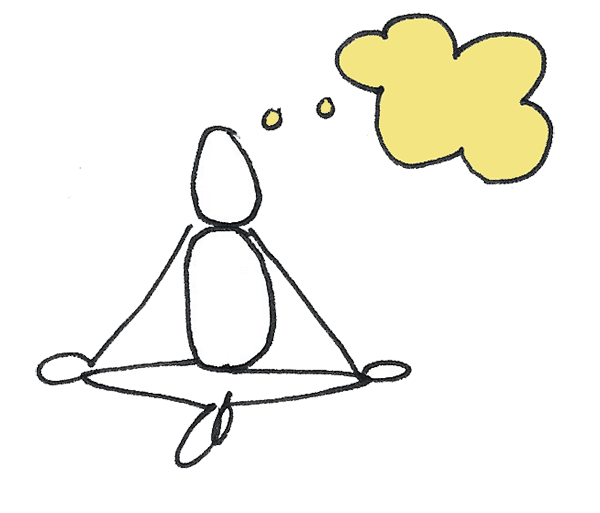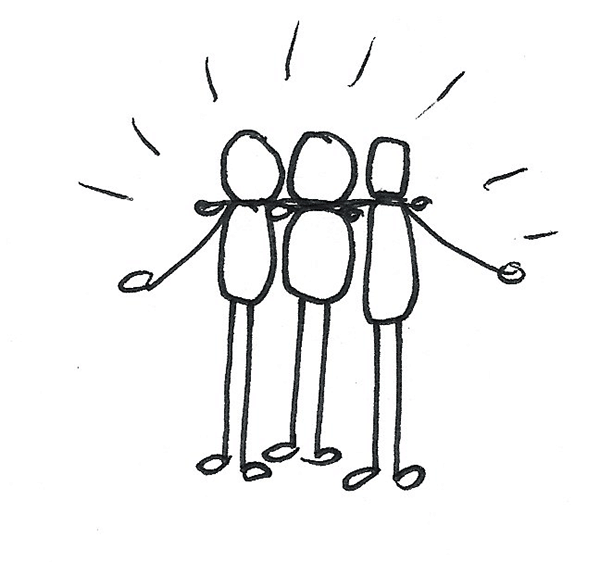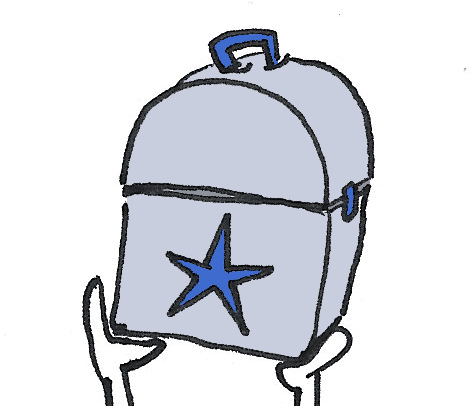
The COVID 19 Project tests the hypotheses that citizens, provided with information and tools can be trusted to address the complex problems in their community and nationally.
Get Involved
TAKE PART IN OUR EFFORT
Citizens and civil society organizations interested in supporting and joining the COVID 19 Project are welcome.
Join us for our online event at the occasion of the beginning of the Citizen Commission (Details to come)

Masks: Citizen Brief

Take Action
Stakeholders Involved
The federal, state and local government
The media
Manufacturers
The medical system
The public
Vision:
By September 1st, 2020 the Coronavirus that causes COVID 19 will be contained and managed with public health strategies. Maximal utilization of face masks and related personal activity by the relevant population.
Goal:
Provide an overview and recommendations for best practices for the general public.
Explore the way PPE in general and masks, in particular, were addressed during the pandemic.
The Challenge:
Provide an evidence-based strategy for minimizing the spread of the COVID 19 virus through evidence-based recommendations for individuals.
Background:
Facial masks have been shown to decrease the spread of respiratory viral infections in general and COVID- 19.
Blog: The War against the COVID 19 Pandemic and the Deaths of Despair


Face masks during the COVID-19 pandemic
During the COVID-19 pandemic, face masks have been employed as a public and personal health control measure against the spread of SARS-CoV-2. Its use is intended as personal protection to prevent infection and as source control to limit transmission of the virus in a community or healthcare setting. The use of masks has received varying recommendations from different public health agencies and governments. The World Health Organization and other public health organizations agree that masks can limit the spread of respiratory viral diseases such as COVID-19. However, the topic has been a subject of debate, with some public health agencies and governments initially disagreeing on a protocol for wearing face masks.
As of early May 2020, 88% of the world's population lives in countries that recommend or mandate the use of masks in public; more than 75 countries have mandated the use of masks. Debates have emerged regarding whether masks should be worn even when social distancing at 2 meters (6 feet), and whether they should be worn during exercise.Additionally, public health agencies of some countries and territories have changed their recommendations regarding face masks over time. Face masks have been a subject of shortages, and not all have been certified. Moreover, substandard masks were reported on the market with significantly reduced performance.
1.1.1Decontamination and re-use
1.3 Disposable filtering respirators
1.5 Powered air-purifying respirators (PAPRs)
1.6 Novel face masks (research and development)
2.2 US Centers for Disease Control and Prevention
In this Covid-19 Medical Grand Rounds (July 16, 2020), three world experts discuss a variety of issues surrounding how the coronavirus moves from person to person, how best to block viral spread, and the potential that mask-wearing may not only prevent infection but also lead to a milder clinical course. The questions regarding aerosol vs. droplet transmission and the value of wearing masks and/or face shields are central to formulating public health strategies as well as to informing the personal decisions that each of us makes every day. The session is hosted by UCSF Department of Medicine chair Bob Wachter.
Facial Masks



A surgical mask is a loose-fitting, disposable device that creates a physical barrier between the mouth and nose of the wearer and potential contaminants in the immediate environment. These are often referred to as face masks, although not all face masks are regulated as surgical masks. Note that the edges of the mask are not designed to form a seal around the nose and mouth.
An N95 respirator is a respiratory protective device designed to achieve a very close facial fit and very efficient filtration of airborne particles. Note that the edges of the respirator are designed to form a seal around the nose and mouth. Surgical N95 Respirators are commonly used in healthcare settings and are a subset of N95 Filtering Facepiece Respirators (FFRs), often referred to as N95s.
DIY Facemasks and bandanas can be made by hand, and they are needed for protection in hospitals, nursing homes, rehab centers, group homes and other group settings. These masks are being used more and more by the general public
Surgical Mask
General information and guidelines
A surgical mask, also known as a face mask, is intended to be worn by health professionals during healthcare procedures.It is designed to prevent infections in patients and treating personnel by catching bacteria shed in liquid droplets and aerosols from the wearer's mouth and nose. They are not designed to protect the wearer from breathing in airborne bacteria or viruses whose particles are smaller. With respect to some infections like influenza they appear as effective as respirators, such as N95 or FFP masks; though the latter provide better protection in laboratory experiments due to their material, shape and tight seal.
Surgical masks vary by quality and levels of protection. Despite their name, not all surgical masks are appropriate to be used during surgery. Surgical masks may be labeled as surgical, isolation, dental, or medical procedure masks. Chinese health officials distinguish between medical (non-surgical) and surgical masks.
N 95 Masks
General information and guidelines
Surgical masks are loose pieces of fabric placed in front of the mouth and nose. They offer very good protection against outgoing droplets (eg if you sneeze, you won’t infect other people), and offer some protection against incoming droplets (eg if someone else sneezes, it doesn’t go straight into your nose). They’re not airtight, so they offer no protection against airborne disease or the airborne component of aerosol diseases.
Here’s a complete guide to masks, tips on how not to wear one, what the best materials are for making a mask, and even how to sew your own.
Do it Yourself Mask
General information and guidelines
How to Wear a Facial Mask Seattle Times
Simple DIY masks could help flatten the curve. We should all wear them in public. Got a T-shirt? You can make a mask at home.
More Americans Should Probably Wear Masks for Protection
Experts have started to question whether masks may offer at least some protection to healthy individuals and essential workers. (NYTimes March 27,2020)
Million Mask Mayday-Make Masks & More to Fight COVID19 RosieSews.org /
Face Masks for All - #masks4all | Slowing Spread of Coronavirus Infection with Homemade DIY Masks Mar 27, 2020
Masks and Critical Thinking - Why homemade masks really work against coronavirus #Masks4All
How to Significantly Slow Coronavirus? #Masks4All
Mar 27, 2020
Homemade face masks: Why they may not protect you from coronavirus CNET March 27, 2020
N95 masks adhere to strict protocols to block out airborne particles like viruses in ways that cotton and elastic just can't.
Here’s a complete guide to masks, tips on how not to wear one, what the best materials are for making a mask, and even how to sew your own.
References
Covering general guides, mask efficacy, research on the topic and ideas for creating homemade masks.
Guidelines and Recommendations
Which Mask Should You Wear? Tara Parker-Pope, Rachel Abrams, Eden Weingart and Tony Cenicola April 17, 2020
Washington Post , Coronavirus spurs a run on face masks. But do they work? January 24, 2020
FDA N95 Respirators and Surgical Masks (Face Masks)
CDC Strategies for Optimizing the Supply of Facemasks
Audience: These considerations are intended for use by federal, state, and local public health officials; leaders in occupational health services and infection prevention and control programs; and other leaders in healthcare settings who are responsible for developing and implementing policies and procedures for preventing pathogen transmission in healthcare settings.
WHO: Coronavirus disease (COVID-19) advice for the public: When and how to use masks
WHO: Q&A: Masks and COVID-19 7 June 2020 WHO: Interim guidance 27 February 2020
Rational use of personal protective equipment for coronavirus disease 2019 (COVID-19) (Pdf)
This document summarizes WHO’s recommendations for the rational use of personal protective equipment (PPE) in healthcare and community settings, as well as during the handling of cargo; in this context, PPE includes gloves, medical masks, goggles or a face shield, and gowns, as well as for specific procedures, respirators (i.e., N95 or FFP2 standard or equivalent) and aprons. This document is intended for those who are involved in distributing and managing PPE, as well as public health authorities and individuals in healthcare and community settings, and it aims to provide information about when PPE use is most appropriate.
“What is the evidence that personal protective equipment (PPE) is effective in preventing infection with COVID-19 in those working at the clinical front line?”
Cloth masks and mask sterilization as options in case of shortage of surgical masks and respirators Technical report 26 March 2020 European Centre for Disease Prevention and Control
Medical Masks JAMA
Face masks for the public during the covid-19 crisis Trisha Greenhalgh and colleagues argue that it is time to apply the precautionary principle
General Media:
CBS News August 14, 2020 New studies suggest some face coverings are ineffective in preventing coronavirus infections
COVID-19: WHY WE SHOULD ALL WEAR MASKS — THERE IS NEW SCIENTIFIC RATIONALE
Sui Huang Medium March 23.2020
Why Telling People They Don’t Need Masks Backfired NYTimes March 17, 2020)
To help manage the shortage, the authorities sent a message that made them untrustworthy.
More Americans Should Probably Wear Masks for Protection
Experts have started to question whether masks may offer at least some protection to healthy individuals and essential workers.
Where Are All the Masks? NYTimes March 21, 2020
Frightened Doctors Face-Off With Hospitals Over Rules on Protective Gear NYTimes 3/31/2020
Why America ran out of protective masks — and what can be done about it
If the US was better prepared for pandemics, it could have avoided the shortage of masks and other protective gear.
Vox Mar 27, 2020
How the World’s Richest Country Ran Out of a 75-Cent Face Mask
A very American story about capitalism consuming our national preparedness and resiliency.
The untold origin story of the N95 mask
The most important design object of our time was more than a century in the making.
Keeping the Coronavirus from Infecting Health-Care Workers, outlines “what Singapore’s and Hong Kong’s success is teaching us about the pandemic”. All the different types of face masks, and who should wear them during the coronavirus outbreak
Face Masks: Much More Than You Wanted to Know
A recent analysis by Scott Alexander, a psychiatrist who blogs at Slate Star Codex reviewed laboratory as well as more “clinical” data and public reports of the use of facial masks by health care personnel as well as the general public. He concludes that “If the shortage (Of available facial masks) ends, and wearing a mask is cost-free
Do Homemade Face Masks Actually Help Fight the Coronavirus? (Not supporting mask use by public) Wirecutter Marcch 27, 2020
DIY Masks - Research to inform the debate
NY Times Opinion It’s Time to Make Your Own Face Mask. Here’s how to do it.
CDC CONSIDERS RECOMMENDING MASKS IN PUBLIC — The agency may recommend that Americans use do-it-yourself cloth coverings as a way of limiting spread during the coronavirus pandemic, WaPo's Joel Achenbach, Lena H. Sun and Laurie McGinley report.
— U.S. public health officials have been far more stringent in their warnings against masks than their counterparts around the world, POLITICO's Ben Schrekinger writes.
New antiviral masks from Israel may help stop deadly coronavirus
By Abigail Klein Leichman
7 Israeli mask and face shield solutions for coronavirus
By Abigail Klein Leichman
Masks. Evidence is mounting that if all people wear masks in public, they are far more effective at stopping transmission than was previously realized. But outside New York, California and a few other states, many Americans resist wearing them.
Reusable Full-Face Snorkel Mask PPE Project | Stanford Prakash Lab
What Are The Best Materials for Making DIY Masks?
Face Mask Sewing Pattern with insertable filter | Craft Passion: Not tested
Face Mask Sewing Pattern with Insertable Filter designed by two doctors:
'Cosplayers Unite!' Medical officials in Washington state solicit homemade face masks
100 Million Masks Project from Providence Hospital (kit with materials to make surgical masks provided)
JAMA Patient Handout: Wearing Masks
Adding A Nylon Stocking Layer Could Boost Protection From Cloth Masks, Study Finds
White House Adopts Mask Requirement, but Not For Trump


